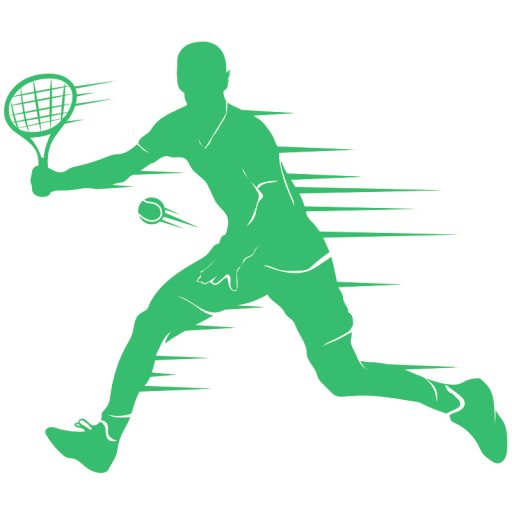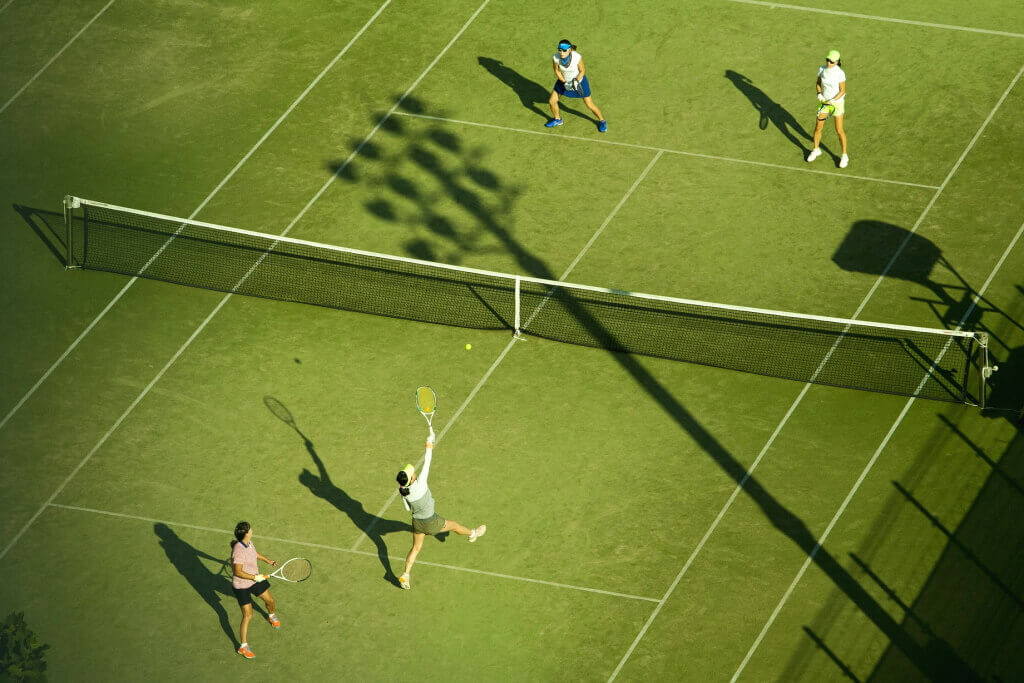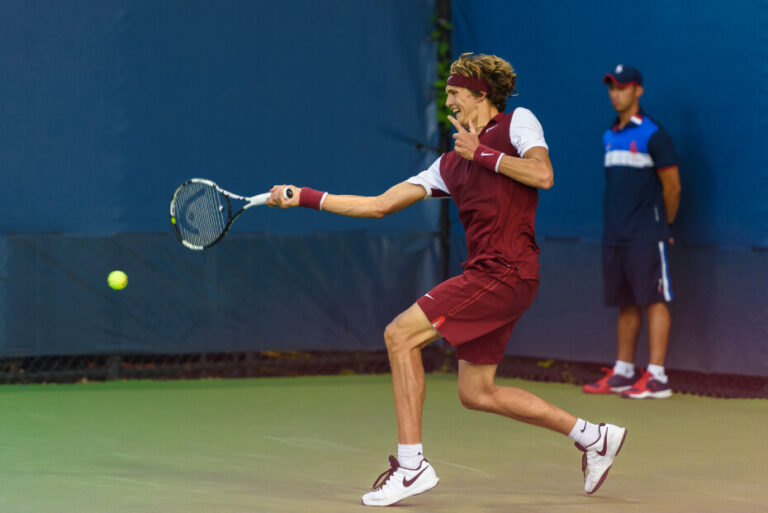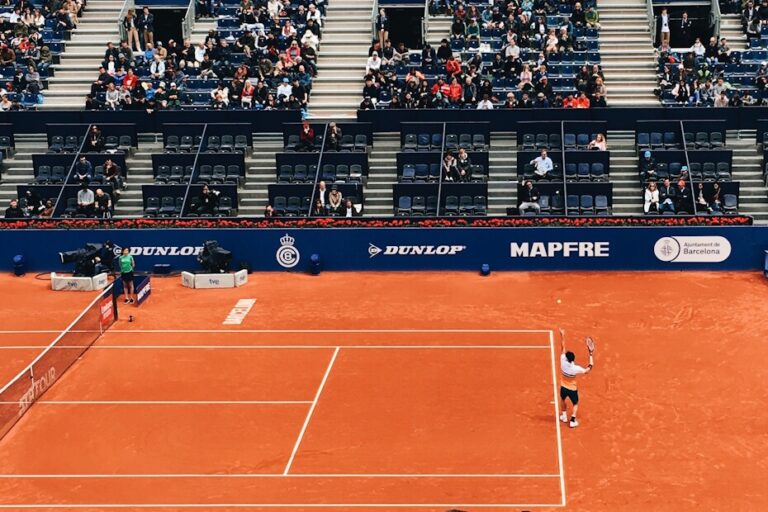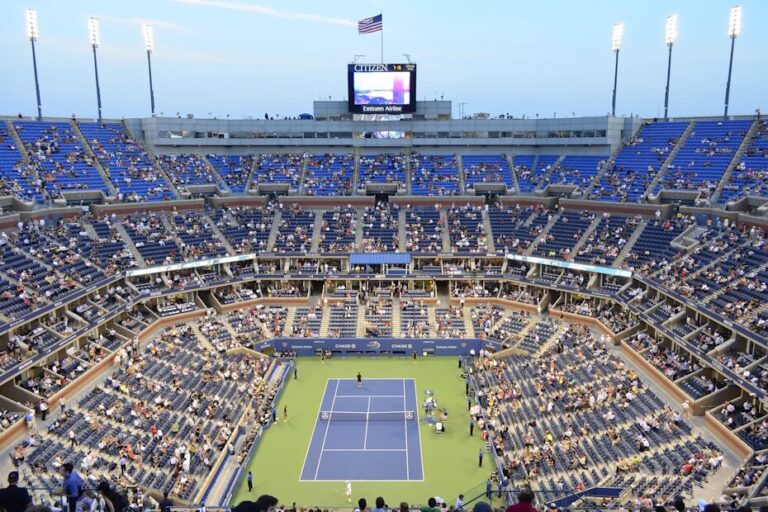There are fewer more civilized and gentrified sports than tennis, which is why it’s a sport with origins that can be traced all of the way back to the 12th or 13th centuries.
Now, don’t get us wrong, tennis has undergone a lot of re-development in the past, yet the sport that we all know and love to this day has not really changed a great deal for the last century or so.
As a tennis fan, there’s nothing finer than settling down in front of the TV, with a cold beverage in one hand, and a bowl of strawberries and cream in the other, ready to watch your favorite tennis player battle it out in one of the many Grand Slam tournaments.
While singles tennis is all fun and games to watch, you cannot underestimate the popularity of doubles tennis. Yes, we know that singles tennis hogs the limelight more than Kanye West did at the 2009 VMAs, but there is still a huge demand for doubles tennis, and that demand is growing every single day.
Despite the growing interest in doubles tennis, there is still a great deal of uncertainty regarding the rules and differences from singles tennis, and that simply will not do. Here’s a detailed look at the key differences between singles and doubles tennis.
First Off, What is Doubles Tennis?
You’ve no doubt watched singles matches on the TV at some point in your life, watching players such as Federer, Nadal, the Williams sisters, Andy Murray, and so on, put on clinics that made for some truly epic matches.
Just recently, in fact, teen tennis sensation, Emma Raducanu won the US Open and became the first British woman to win a Grand Slam since 1977, when Virginia Wade did the honors. Emma was recently voted Sports Personality of the Year, and rightly so, and this does indeed show that singles tennis is popular and is more in the mainstream than doubles.
So, does this mean then, that doubles tennis is to be relegated to the history books and left to rot and fester, forgotten about like that meatball that rolled under the fridge all of those months ago? Absolutely not. There is still an audience for doubles tennis, it’s just that it’s not as pronounced as singles, which is why we’re raising awareness today. The more people that are aware of doubles tennis, the more people will watch, and the more people will fall in love with this variation of the sport.
Now that we’ve established that doubles tennis doesn’t quite get the love that singles tennis does, we’d better bring you up to speed with what doubles tennis actually is.
Doubles is a game of tennis that is contested between two teams of two players. Usually, the matches are gendered, so you typically find that it’s either two teams of men, or two teams of females, though there are inter-gender mixed doubles matches competed too, in which men and women pair up and play on a more relaxed and informal setting, such as an exhibition match, but we’ll learn more about mixed doubles a little later on.
What’s most interesting about doubles, is the fact that the tennis court is wider than with singles tennis, which is down to the fact that it includes the ‘Alley’ (the area in the tramlines) which is not utilized in match play in singles tennis.
In terms of how this game is contested, the two players who are on the receiving side will switch positions after each point played, so one will be stood near the baseline ready to return the serve, with the other player standing close to the net.
More About Mixed Doubles
Despite the fact that mixed doubles tournaments are so rare, that doesn’t mean that they’re to be overlooked.
Yes, we know that there are professional men’s and women’s tournaments organized by the ATP (Association of Tennis Professionals) and the WTA (Women’s Tennis Association), if you’re a fan of the Grand Slam tennis tournaments, you’ll know that each one holds a mixed doubles tournament, featuring the same tennis pros, as well as a men’s doubles tournament, and a women’s doubles tournament. It’s also a heck of a lot of fun.
There is also what is known as the Hopman Cup, which is held annually for national teams and features mixed doubles matches.
Mixed doubles aren’t as rare as some would have you believe either, as they have been featured many times in the past at the Summer Olympic Games.
What’s especially appealing about doubles, mixed or otherwise, is the fact that it enables tennis players to play for longer in their careers. As frustrating as it is, typically, once a person hits 30 years of age, their athletic performance tends to decline. Those aches and pains become more common, you lose half a step of pace, and younger whippersnappers just coming up through the ranks in their early twenties are often athletically superior.
Yes, there are some anomalies in sport, such as the 37-year-old genetic freak Cristiano Ronaldo, who looks fitter, faster, and more athletic than people 10, even 20 years his junior. In tennis terms, Roger Federer was at the top of his game for many years, and in his thirties, he looked more dominant than ever, so it does show that if you train right, eat right, and live your life in a healthy manner, it can prolong your career.
Anyway, we digress. Regarding mixed doubles, or doubles tennis in general, is the fact that doubles tennis is less physically demanding because there are two of you on one side of the court, so you cover less distance. For a tennis pro who is slowing down and has been affected by injuries in the past, doubles is a great way to stay in the game for longer, and to stay competitive and at an elite level. Don’t believe us? Just look at Martina Navratilova and John ‘You cannot be serious!?’ McEnroe, who both won doubles titles comfortably into their 40s.
Basic Doubles Tennis Rules
In this next section, we’re going to be going through the basics of the rules of doubles tennis. Don’t worry, we’ll not be explaining the ins and outs of tennis rules as they are quite complex and we’re sure you’ve got more pressing things to be getting on with. What we will be doing, however, is going over the basics of doubles tennis rules and looking at what sets doubles apart from singles.
As you’ve no doubt ascertained from what we’ve looked at so far, if you were playing doubles tennis it would be you and a partner playing against two opponents on the opposite side of the net. You would utilize the entire court (more than in singles tennis) between the baselines and between the doubles court sidelines.
If you were on the team that was serving first, you or your partner would kick things off by playing the first serve of the game. The serve will be played diagonally into the opponent’s court.
As you’re not Google or any other tech company, you cannot swap servers during a doubles game as the same player must serve for the entirety of the game. So, if you begin by serving for the first game, in the second game the opposition will serve, in the 3rd game your partner will serve, and in the 4th game, the other opposing player will serve. By the 5th game, it’s back to you, and the wonderful tennis cycle will continue in this manner, with the serving order staying this way for the entire set. You can, however, change the serving order and the receiving order at the beginning of each set.
As soon as your team is due to receive, you get the option of deciding which player receives the first point of the game. You and your partner will switch positions at every point for the rest of the game.
A fault will be called if the server’s partner is struck by the serve. If the receiver, or indeed, the receiver’s partner is struck by the ball from the serve before it hits the floor and bounces, this will count as a point for the server. It’s almost like a game of dodgeball except, you know, it’s played with tennis balls and tennis rackets.
For all returning shots, except for the serve, either member of a team can strike the ball to return it, so there is no need to alternate players who are permitted to strike the ball and return it.
3 Key Differences between Singles and Doubles
The main difference between singles and doubles is the number of players. In singles tennis, two players are on the court at one time, playing against each other. In doubles tennis four players are on the court at once, playing in a 2v2 format.
There, that was easy, wasn’t it? Only kidding, there are of course many other differences between a game of doubles tennis and singles tennis, and to prove this, we’ll be highlighting these key differences below.
Here’s a look at how doubles and singles tennis games are so different.
1. Singles Tennis is More Physical
We touched upon this a little earlier on, but don’t worry, we’re going to expand upon it now in more detail.
Singles tennis is considered to be noticeably more physically demanding than doubles. In singles tennis, players are constantly competing from the start of the match until the finish. As if that wasn’t enough, players also have to cover the entirety of the tennis court.
To be a singles tennis player, you need to be physically fit and have a lot of stamina and endurance.
Doubles tennis is more physically forgiving because there are two of you playing so your partner shares half of the workload. Yes, we know that the court is slightly bigger in doubles, but not heaps larger.
2. The Lines Are Different
We went over the basic rules of doubles tennis a little earlier on, but so far we’ve not really looked at the difference in the size of the court.
In doubles tennis, you now know that the court is larger, but exactly how much larger? Well, a singles tennis court is a very respectable 27 feet in width, whereas a doubles tennis court is an imposing 36 feet in width. This is because the wider lines are not utilized in singles tennis like they are in doubles.
3. Doubles Tennis is More About Strategy
In singles tennis, it’s basically you against your opponent and so you can’t really plan a great deal because how you play all depends on how your opponent plays because you’ve got so much of the court to cover.
With doubles, because each player is assigned a position on the court, the court is now essentially split into four, so each player can remain in their section of the court as they have less space to cover.
The strategy really comes into the fold here because each player has a specific rival that they need to “attack”. Typically, you’ll find that the shots that score big are those which come from the rear of the court that go especially deep. Because of this, the player that strikes the ball tends to score the point for their team if the opposing player is located too close to the net.
When there are four players on the court, the game becomes more about strategy and less about athletic ability.
